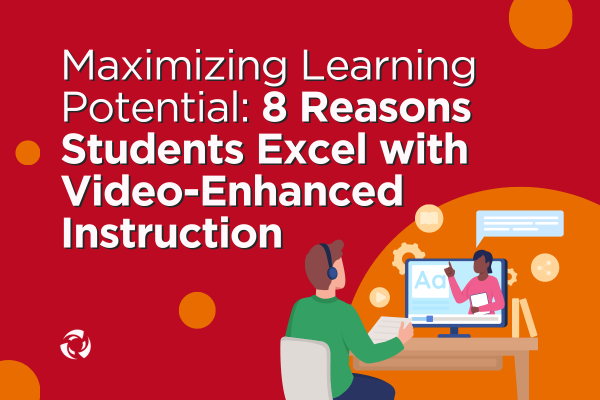
In the continuously changing face of education, the imperative to employ technology as a catalyst for enhanced learning experiences has never been more evident. Among the myriad of tools available, video content continues to stand out as a potent force in shaping the academic landscape. As we navigate the evolving intersection of education and technology, it is essential to delve into the reasons behind the remarkable success of students when instructional methods are enriched through integration of engaging and dynamic video resources.
There are several reasons that we have seen the increase in student success when curriculum is supported by video, as we have all witnessed the paradigm shift as today’s students increasingly gravitate towards learning beyond the traditional confines of the classroom. A significant portion of their educational journey unfolds in the digital realm, with a predilection for consuming instructional content through diverse online platforms. Video-based learning has become an integral part of this trend, aligning seamlessly with the contemporary student’s inclination to acquire knowledge at their own pace, anytime, and anywhere. As the modern educational ecosystem continues to embrace this digital metamorphosis, the role of video content in supplementing classroom instruction becomes even more pivotal in catering to the preferences and habits of todays’ learners.
Let’s look at the 8 reasons students excel with video-enhanced instruction:
1. Visual and Auditory Stimulation
Humans are inherently visual learners, and the combination of visual and auditory stimuli in video content provides a multisensory learning experience. The dynamic nature of videos captures students’ attention, fostering engagement and aiding in information retention. This combination of visual and auditory elements helps reinforce key concepts, making learning more effective.
2. Complex Concepts Made Accessible
Certain subjects or topics can be inherently complex, and video content provides an effective way to simplify and break down these concepts. Visual representations, animations, and real-world examples help students visualize abstract ideas, making it easier for them to understand challenging material.
3. Catering to Diverse Learning Styles
Every student has a unique learning style, and video content caters to a variety of preferences. Some students may thrive in a traditional lecture format, while others benefit more from visual demonstrations or interactive scenarios. By incorporating video, educators can accommodate diverse learning styles, ensuring that each student has the opportunity to grasp information in a way that resonates with them best.
4. Enhanced Retention and Recall
Research consistently indicates that visual aids significantly contribute to improved retention and recall*. Video content allows students to revisit lessons, reinforcing their understanding of the material. The combination of moving images and sound enhances memory retention, ensuring that students can recall information more effectively during assessments and beyond.
5. Flexibility for Personalized Learning
Video content offers a flexible learning experience that can be tailored to individual student needs. Whether students need additional review or want to explore advanced topics, video-enhanced instruction allows them to learn at their own pace. This personalized approach promotes self-directed learning, empowering students to take ownership of their educational journey.
6. Real-World Applications
Videos often bring real-world applications of theoretical concepts to life. This connection to the practical aspects of a subject not only makes learning more interesting but also helps students understand the relevance of their studies. Seeing how concepts are applied in real-life scenarios fosters a deeper appreciation for the subject matter.
7. Increased Engagement and Motivation
The dynamic nature of video content captures students’ interest and maintains their focus throughout the learning experience. Engaging visuals, storytelling, and interactive elements contribute to a more enjoyable and motivating learning environment. Students are more likely to invest time and effort into their studies when the instructional content is both informative and entertaining.
8. 21st-Century Skills Development
The use of video in education aligns with the development of essential 21st-century skills. As students engage with digital content, they become familiar with various multimedia tools and platforms, fostering digital literacy. Additionally, collaborative video projects and discussions promote critical thinking, communication, and teamwork—skills that are invaluable in the modern workforce.
The integration of video content with instructional practices is a powerful strategy for optimizing the learning experience for students. The visual and auditory richness of videos, combined with their flexibility and ability to cater to diverse learning styles, contribute to enhanced comprehension, retention, and motivation. As educators continue to adapt to the digital age, the thoughtful integration of video content is a key element in fostering academic excellence and preparing students for success in a rapidly changing world.
To learn more about MyVideoSpot, please visit us at www.myvideospot.com, email us at sales@myideospot.com or call us toll free at 888-237-6740.
*Sources
https://changingminds.org/explanations/learning/active_learning.htm





